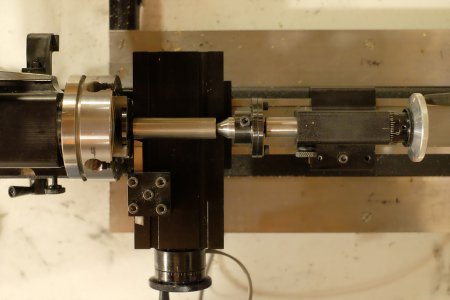- Joined
- Aug 5, 2015
- Messages
- 237
You show the second GIB to be secured with 10-32 screws. Am I right to assume that these will be cap screws of some sort and that there will be two vertical and two horizontal? And that when tightened, they will securely assure that the GIB will be, so to speak, an immovable part of the tailstock casting? If so, then the design looks like it could work. I looked at my tailstock and unfortunately see that there is not enough meat to incorporate your design to my existing tailstock, and like you said, would require a modified casting.
If it requires a modified casting design to incorporate your design change, then it might also be just as easy to make a tailstock the same way that they have been made for larger machines. They can be adjusted horizontally with screws and vertically with shims. A simple design that has worked well on other lathes for a century.
I think for my tailstock I would only need to have about 0.003" shaved/machined from the angled surface on the opposite side from the existing gib in order to obtain really good alignment. Mine only needs to come towards the operator a smidgen. I don't have the cutter or a good enough milling machine to make that cut though. I keep thinking, but have not come up with a better solution.
I go crazy thinking about the tailstock alignment
If it requires a modified casting design to incorporate your design change, then it might also be just as easy to make a tailstock the same way that they have been made for larger machines. They can be adjusted horizontally with screws and vertically with shims. A simple design that has worked well on other lathes for a century.
I think for my tailstock I would only need to have about 0.003" shaved/machined from the angled surface on the opposite side from the existing gib in order to obtain really good alignment. Mine only needs to come towards the operator a smidgen. I don't have the cutter or a good enough milling machine to make that cut though. I keep thinking, but have not come up with a better solution.
I go crazy thinking about the tailstock alignment
Last edited:


